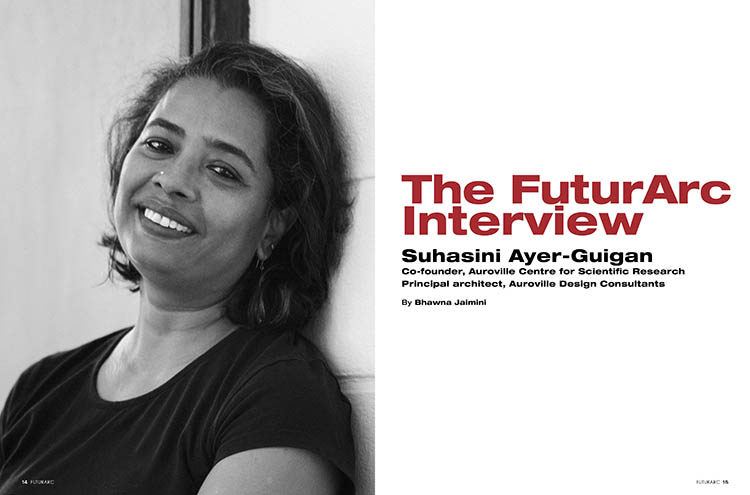Suhasini Ayer-Guigan
March 26, 2017
BJ: As a practitioner in the sphere of sustainable architecture that goes beyond just the built form, what do you think has changed in this field from the time you started your practice more than three decades ago? How has the perception of sustainability in architecture impacted the practice?
SA: I finished architecture school in Delhi and moved to Auroville, where the challenge was to work with very little resources. I had to work in isolated sites where people lived without access to any services like electricity, drinking water or a sewage system. Apart from the post-occupancy scenario, there were other challenges of designing and building with unskilled labour, poor quality materials, non-availability of steel and cement as well as other resources that we now take for granted. It was an incredible learning experience that had changed my view of the built environment. I began to practise what I call low-input architecture. I didn’t even know the word sustainability then.
I come from a generation that deemed architecture as an individual’s creations. The master architects were celebrated for their sense of design, aesthetics and proportion, and everything else was irrelevant. Architecture was boxed in this thinking for almost two centuries, which was further glorified by the book The Fountainhead. When I read the book after joining architecture school, I felt that it did not take into account the complexity and subtlety of human nature. It glorifies a masochistic view of humanity and, most shockingly, how it symbolised that our architecture will be founded on rape, and not co-creation. The book shaped the idea of architecture for decades. However, in the ’90s, people started talking about climatic architecture—which later became solar passive architecture—and then the word sustainability came into place.
Sustainability, unfortunately, has become a slogan rather than a sensitive approach to built environment. Sustainability is about context, and context is about geography. The geography dictates everything, from the environment and people to food and culture, and even to how human neurological synapses work. The flag bearers of globalisation wants us to believe that humans can be transported from one end of the world to another and can still function without context. But context is imperative and that is why sustainability as a buzzword does not work because we are still looking at it divorced from context.
BJ: What about social sustainability? When we say that a work of architecture is sustainable, we do not take into account the labour issues behind it.
SA: When I say that sustainability is linked to the geography, it is not only about where your building is placed, but also who is doing the building. In India, migrant labour is used for all the construction work without looking at the larger social impact of this phenomenon. The migrant labour is distressed due to the agricultural issues in their villages and they leave behind their community to work in a different region, sometimes for years. They work without any relationship with the developer, the financing agency, the architects and other consultants. All these agencies are already in conflict; they are not working in synergy. They are all working to create a product that can be finished as soon as possible so that the developer can make profits and the financing agency can get the interest and the input capital back.
The weakest link in this nexus is the architect. The architect wants to safeguard his practice by doing the maximum number of projects for minimum payments to give decent wages to the people who are working for him. He is not even thinking about the craftsmen, or rather labour, who is executing his design on-site. He is momentarily shaken with guilt when he sees a pregnant woman carrying bricks on-site but he is not thinking how he can fine-tune his design so that the work done by the labour is of some value. The global capitalist system wants cheap labour, which is a quantitative entity in the bill of quantities. They are no longer individuals but just numbers. If any sustainable approach fails to recognise the contribution of these individuals and only keep looking at energy, materials or other systems, there can be no social impact.
To read the complete article, get your hardcopy at our online shop/newsstands/major bookstores; subscribe to FuturArc or download the FuturArc App to read the issues!
Previously Published FuturArc Interview
Contact us at https://www.futurarc.com/contact-us for older interviews.



